Afternoon Tea parties are a wonderful way to celebrate babies, brides and just getting together with good friends. If only we could all do as the British say and keep calm! And ring Carson for tea! While expectations are high in anticipation for Downton Abbey’s big movie release this Fall, I’m going to share with you the big little secret to enjoying an authentic all British afternoon tea in your own home. For party related recipes, decor and free printables galore be sure to check out our Pinterest board for ideas to plan all the fun! There’s so much to this time honored tradition I couldn’t help but blog about the surprising and fun details I learned and then some!
The Clotted Cream Controversy
There is one authentic UK staple you will find many recipes for, but unfortunately will be unable to truly duplicate and that is the wonderfully delicious scone topping…Clotted Cream. There are many versions of clotted cream recipes out there. Some have cream cheese, some have sugar, some have buttermilk. All of these recipes are an attempt to get close to the unique consistency of clotted cream in the UK. Clotted cream however is a simple condiment that is not sweet at all and instead has a thick buttery creamy flavor. When added to a scone with jam it is a bite of delicious indulgence you will want every day.
There is an ongoing debate in England between Devonshire and Cornwall that spans hundreds of years on whether to put the clotted cream on your scone first and then the jam OR the jam first and then the clotted cream. They take their cream seriously and proudly in this part of the world! I think you may wish to weigh in yourself once you’ve been shown how to recreate this little indulgence yourself.
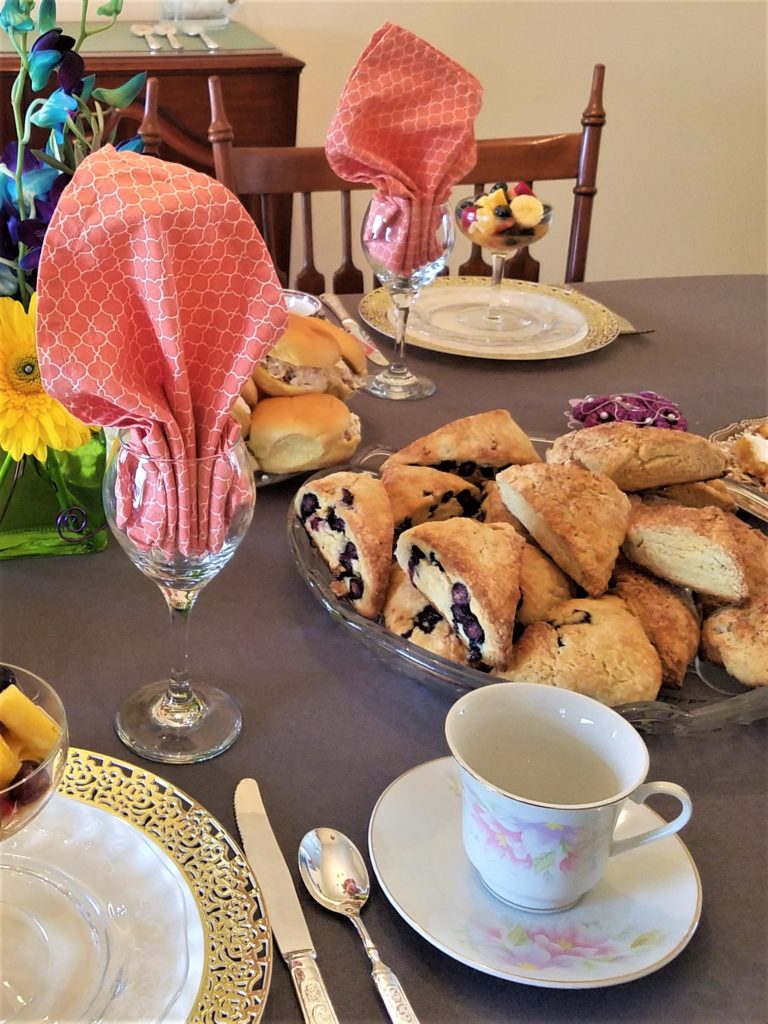
An Afternoon Tea Vernacular Lesson
A genuine afternoon tea with just clotted cream, scones, jam and tea would be ordered as a “Cream Tea” in the UK. This term originates from the southwest Cornwall/Devonshire region of England. Here clotted cream is King ..or Queen respectively. These amazing dairy cows rest on sun basked grassy cliffs overlooking turquoise oceans. Oh for the life of a cow in this part of the world! These cows provide the UK with the richest, freshest cream possible thanks to a mostly sunny island climate in the South of England. Very naturally then, cream when clotted in a pure form was a brilliant addition to scones and a tea break.
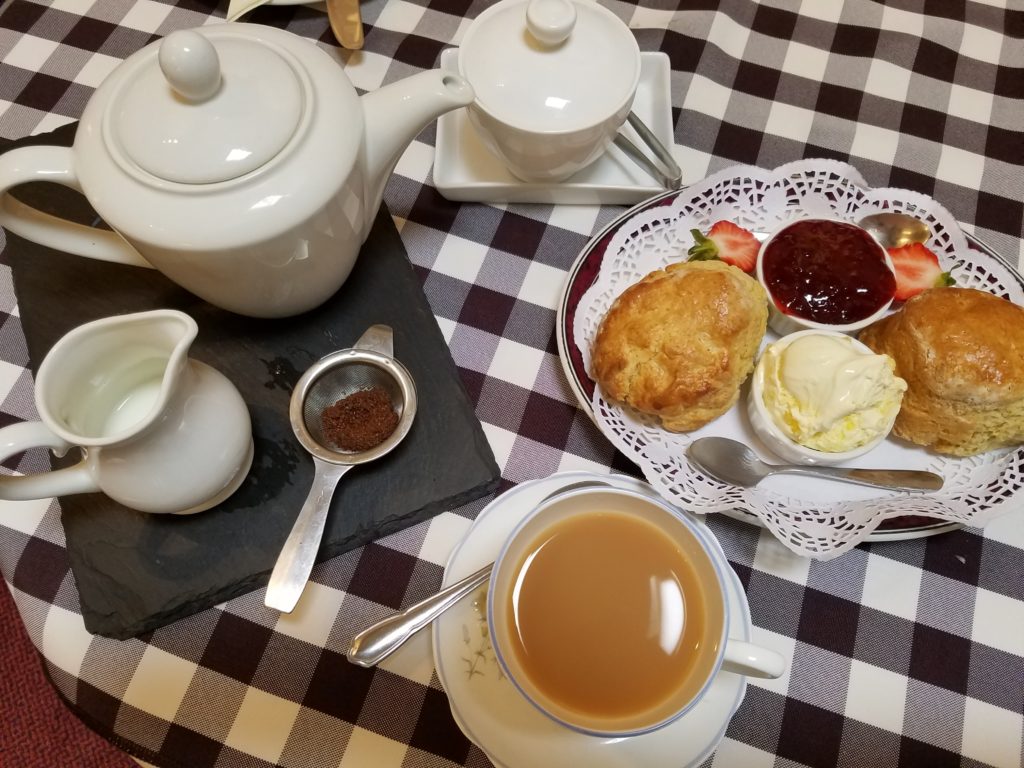
“High Tea” may fill your mind with pictures of Lords and Ladies enjoying those deliciously tiny, extravagant desserts and savory bites along with scones and of course tea. While this is sometimes adopted in posher society, in fact, the English often refer to their evening dinner as High Tea or Tea. For High Tea you traditionally sit at a table in the evening with a cooked dish, bread, butter and tea. If someone in England invites you to Tea they are more than likely talking about something other than just scones and tea. It might be best to ask more specifically until you’re familiar with English terms. We speak English in America but sometimes another culture reminds you we don’t have the only way of doing things. Which is a very good thing in my opinion.
An Afternoon Tea History Lesson
As a group, Americans would call an “afternoon tea” what the English historians would say was created around the turn of the 20th century. Society ladies would sit on low chairs or sofas in the late afternoon to enjoy a little plate of savory and sweet bites with friends along with the must have fresh brewed cup of tea. In short this wonderful custom allowed a turn of the century lady to enjoy a late afternoon of socializing with other peers and a bite to eat to hold them over till the often late dinner hour of 8 o’clock or later. They were able to take a break from other contemporary household duties of the time such as letter writing, household management and needlepoint. Our lives are just as busy and even more so. This is a wonderful custom I feel we should all indulge in from time to time, don’t you think?
Key Ingredients
No matter what we say it should be called, a relaxed afternoon tea with our closest girlfriends makes an enjoyable, unplugged and cozy affair. Whether you’re wearing gloves, your best tea hat or tiara. It’s just plain fun. Now for the traditional part. How do we include clotted cream in the truly traditional sense while not able to access those lovely cows in the South of England?
My research led me to discover the very best method for clotted cream was of course so essentially simple and why wouldn’t it would be?! These pre modern English farm families would take the skimmed off cream from their cows milk, and using a low flat wide pan, place it in their cook stove to bake on low all day to produce this wonderful cream. That’s it! I love when things this amazing are so simple! Now how do we go about reproducing it outside the UK?
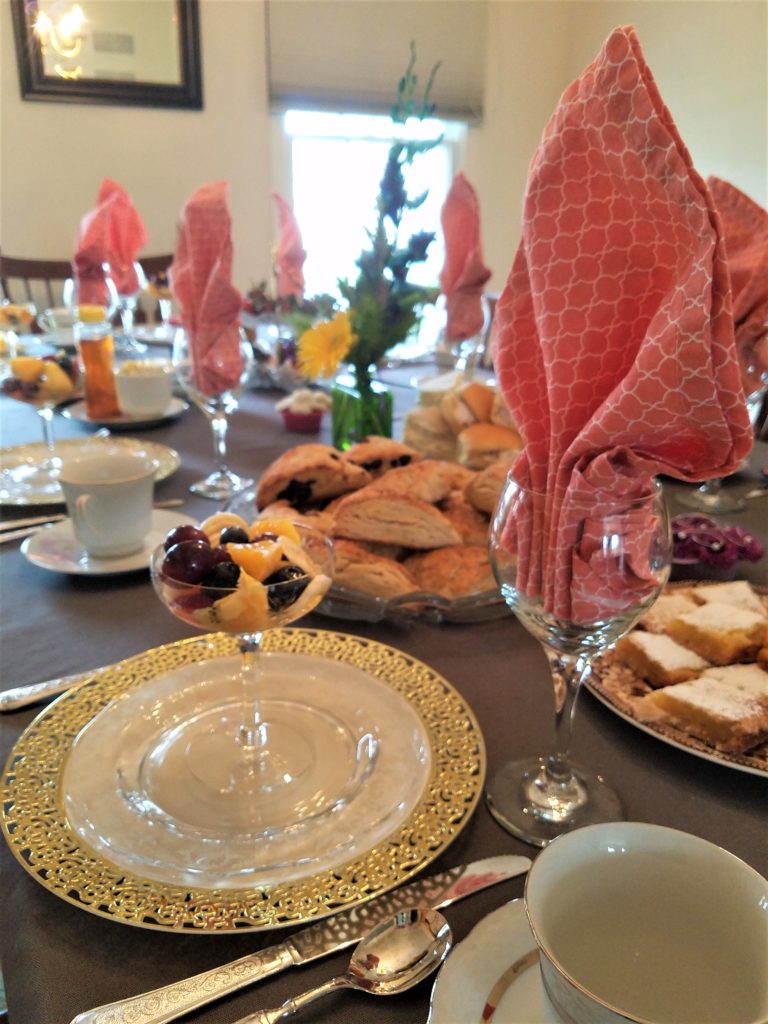
Making the Clotted Cream
After plenty of research and months of time in the UK making sure to sample Cream teas in Cornwall and afternoon tea with friends in England and Ireland, this was research I was not only happy to do but am also very happy to share.
The type of cream used in this process is best when it’s not ultra pasteurized. Any heavy cream in the States will be ultra pasteurized when purchased at the grocery store. I’m not saying it won’t work but it just won’t work as well. Dive deeper than your local Krogers. I phoned a local dairy farm to purchase a heavy cream that was NOT ultra pasteurized. This may take time to find in your area but I assure you it is possible. Once purchased I only had to time everything out for my planned event. You will need at least 24 hours if not 36 hours to complete these next steps. I promise you will not regret it!
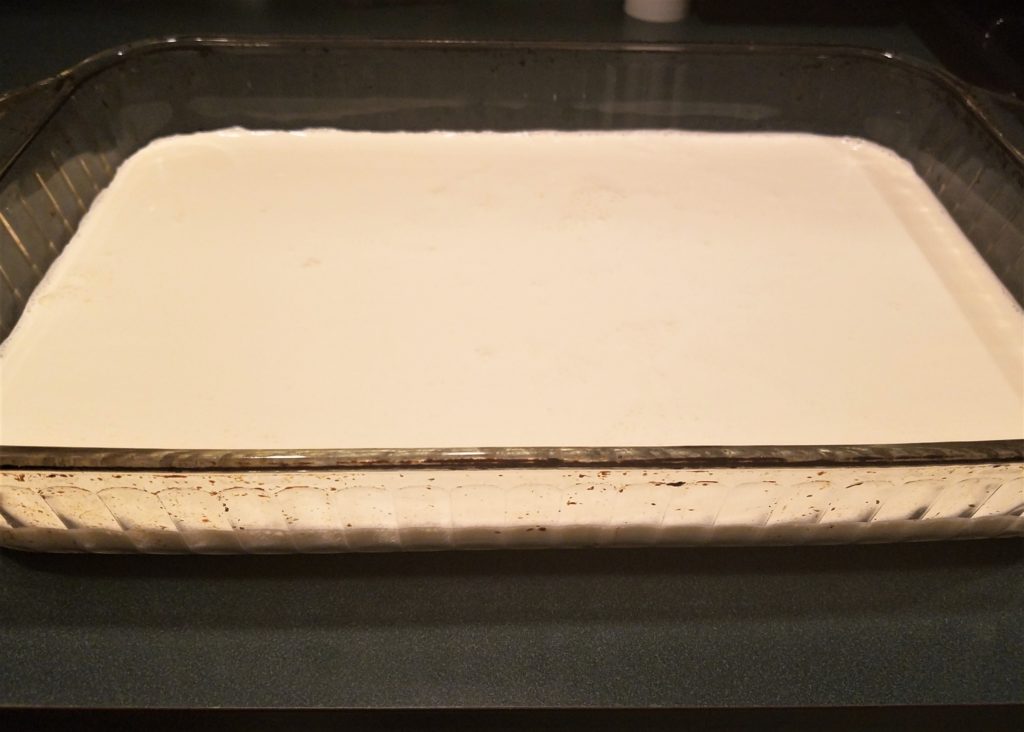
Day 1
You need a low flat pan. I used 2 of my 9×13 pans and 1 of my 8×8 pans. Let’s face it when you make this you’re going to want plenty to share. I put the heavy cream about 2 inches thick into my pans and placed them into a preheated oven at (80 degrees C) 175 – 180 degrees F at 9:00 p.m. and close the oven door. That’s it! You leave the cream in the oven at this temperature for 12 hours. (Please note: Make sure your oven does not have a safety feature where it turns itself off! As it turned out my oven shuts itself off after 12 hours! I did a practice run before my big day with all my friends coming over. You might want to consider that if you aren’t sure what your oven will do.)
12 Hours Later
In the morning at 9:00 a.m. remove your pan from the oven and it will look like this…
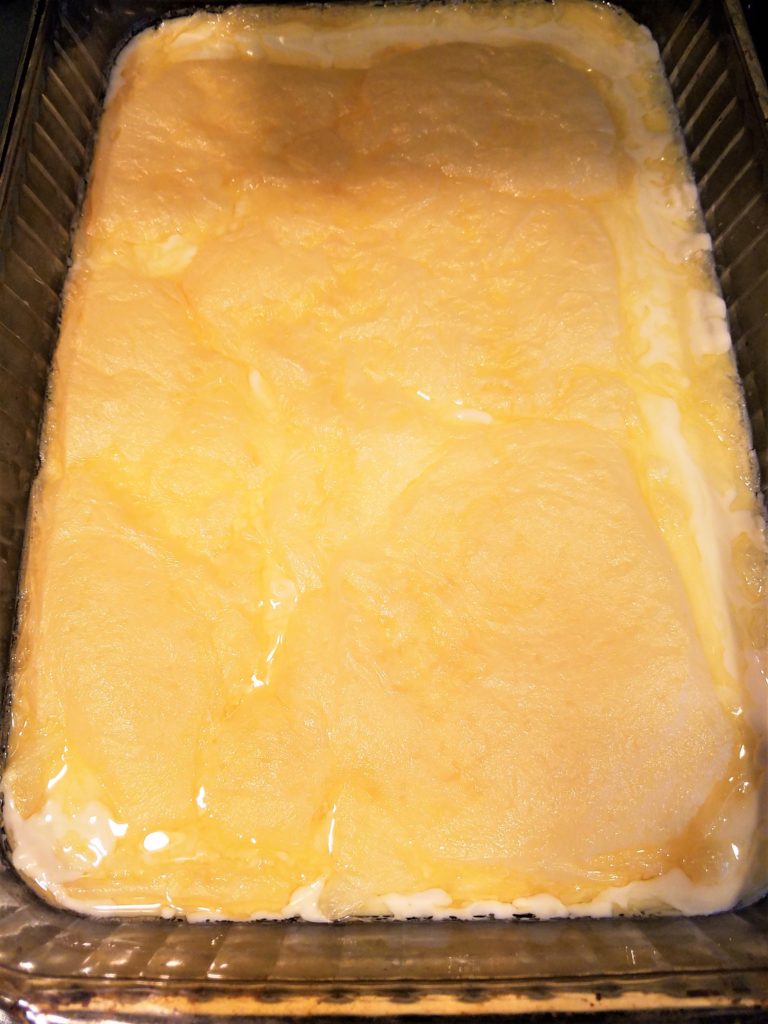
It should look exactly like the above picture. Notice what happens when we peel back that crusty (hence the term clotted) top layer…
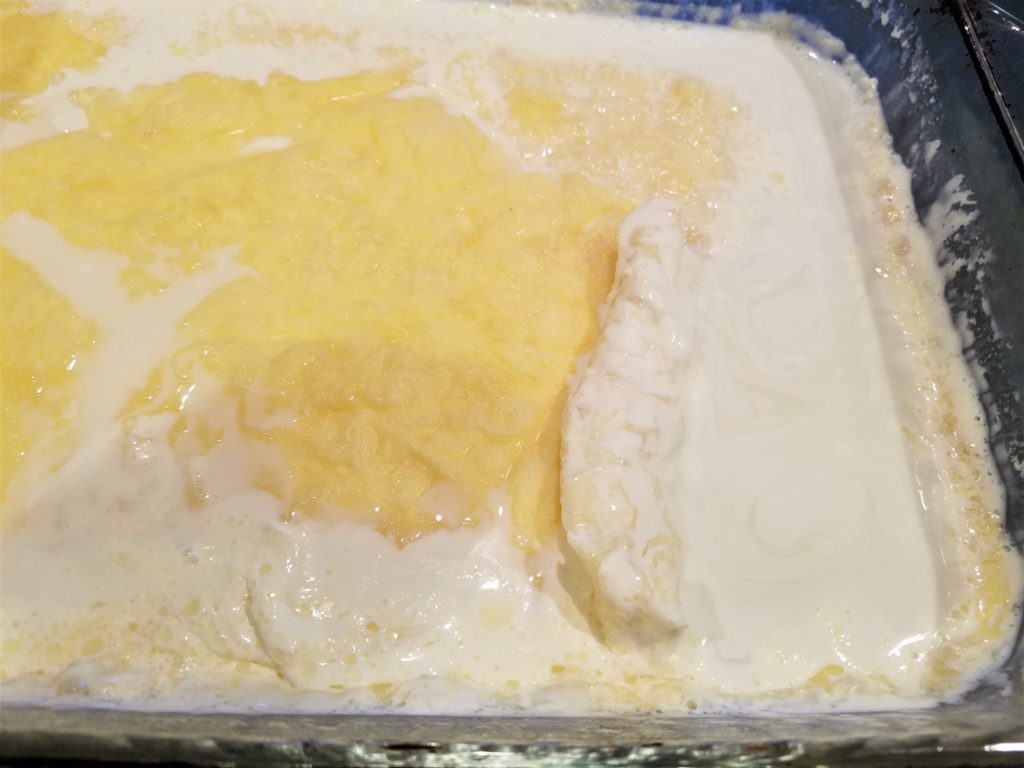
Under that crusty layer is all the lovely thick creamy goodness you’ve worked so hard for. Okay, technically you had a good nights sleep for. Remove that layer and place into a bowl. The milky liquid still in your pan can be saved for that wonderful fresh batch of scones you’re going to make. No self respecting English country farm wife would waste that and you don’t have to either!
Use your mixer to cream this lovely top layer into creamy magnificent scone heaven. If it’s too thick add a little of the liquid milk to achieve that beautiful thick creamy consistency!Enjoy! It will keep in the refrigerator for at least 5 days.
Your afternoon tea preparation is complete! Not only are you going to enjoy the amazing fruits of your labors but you can sit and enjoy a well earned social afternoon minus the kids, the household and all the duties that keep us from doing just that. Keep calm! You got this!
Clotted Cream Recipe
This recipe makes quite a lot! Be prepared to share in small jars as a party favor or gift for your friends and family.
Ingredients:
1 Gallon Heavy Cream (not ultra pasteurized is recommended if possible)
Directions:
- Preheat your oven to 175- 180 degrees Fahrenheit. (80 degrees Celsius)
- Pour heavy cream into a low flat pan such as a 9 x 13 or 8 x 8 pan.
- Place pan(s) into preheated oven and allow to cook for 12 hours. No less and no longer.
- After the 12 hours remove the pan(s) from the oven and onto your stove top.
- Use a spoon or spatula to peel back the top layer of the clotted cream. Place top layer into a large mixing bowl and separate liquid milk underneath into a separate bowl.
- Using your mixer, achieve the desired consistency by mixing the crusty top layer. Add 1 Tbsp at a time of liquid milk from the pan till you are happy with the mixtures creaminess.
- Cover and place in the refrigerator for up to 5 days.

